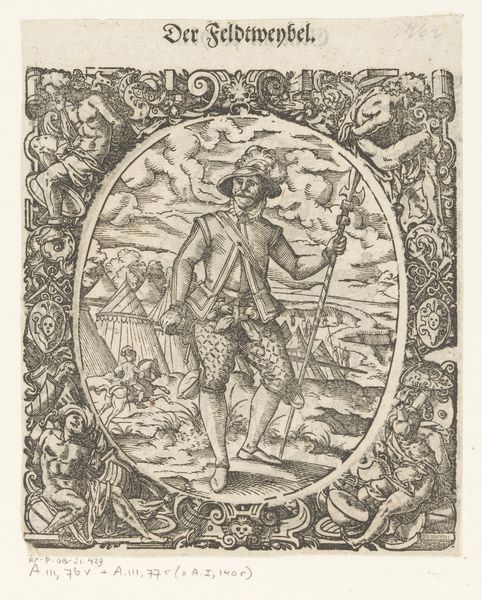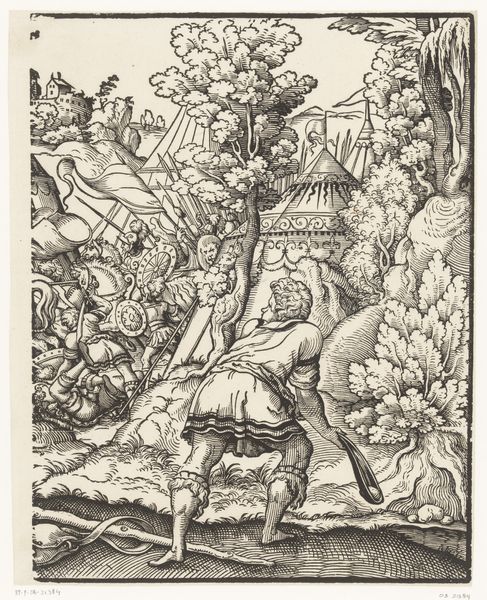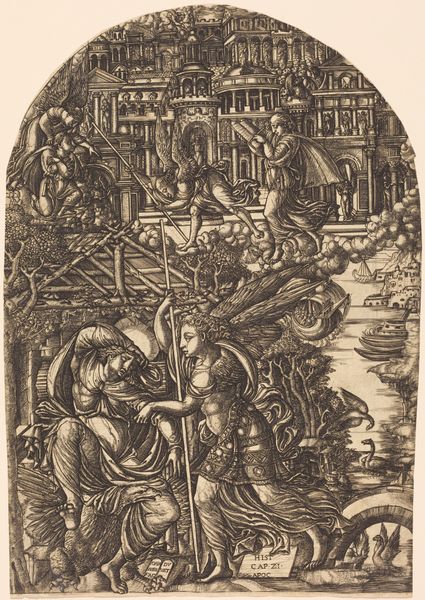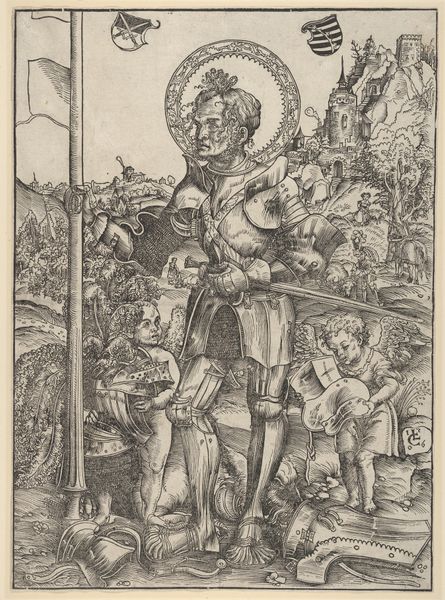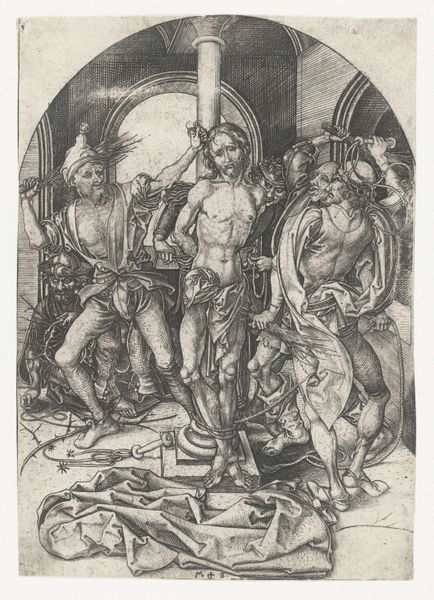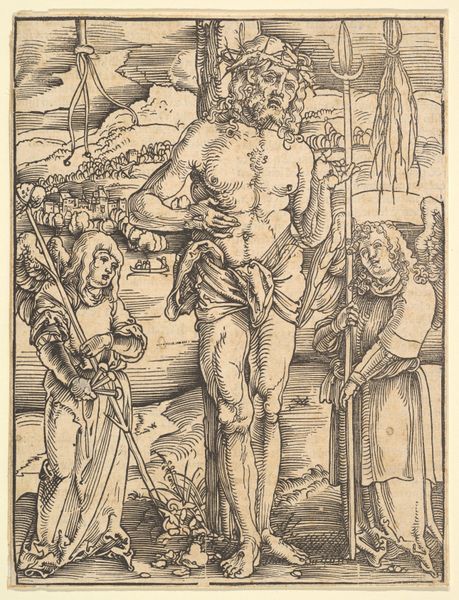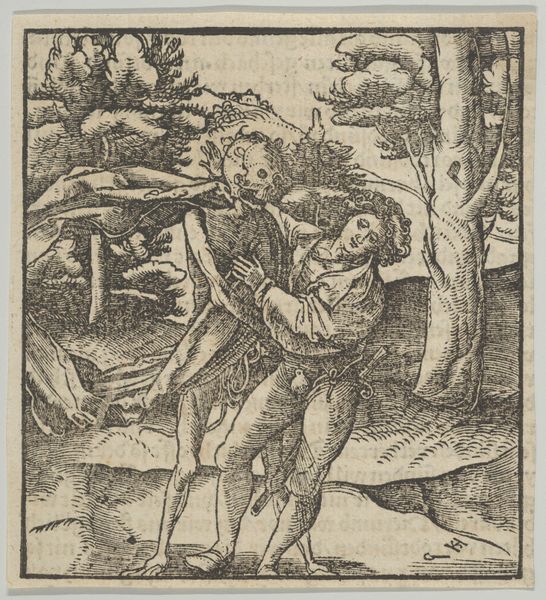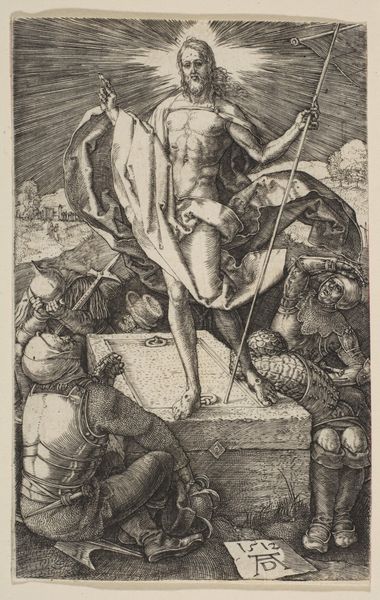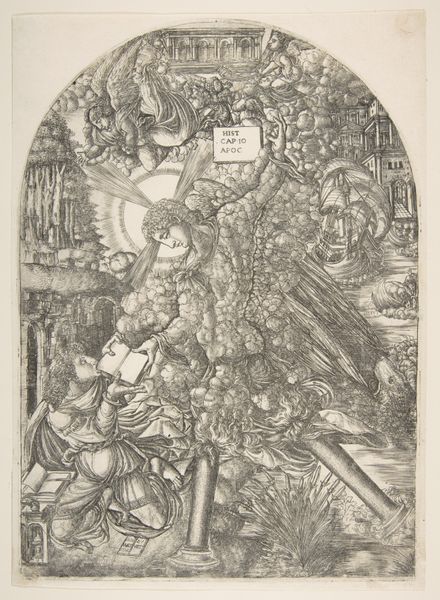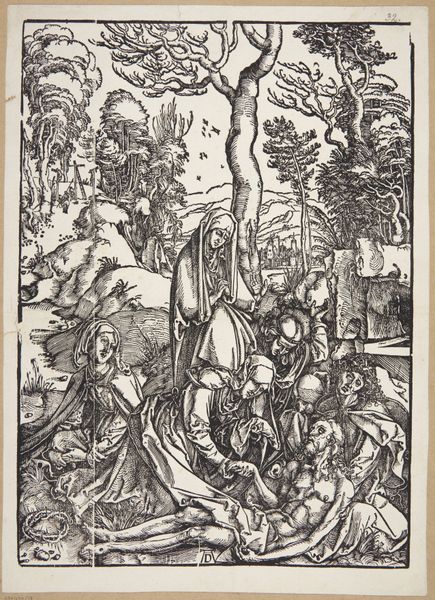
drawing, print, engraving
#
drawing
#
pen drawing
# print
#
figuration
#
line
#
history-painting
#
italian-renaissance
#
engraving
#
sword
Dimensions: sheet: 15 15/16 x 12 in. (40.5 x 30.5 cm) plate: 6 3/16 x 3 15/16 in. (15.7 x 10 cm)
Copyright: Public Domain
Curator: Nicoletto da Modena, an Italian Renaissance artist, created this striking engraving titled "St. George" sometime between 1495 and 1525. What leaps out at you initially? Editor: The intricacy! All that delicate linework builds a surprisingly calm, almost dreamy atmosphere. I expected something more bombastic from a dragon-slaying scene. Curator: It's fascinating, isn't it? The scene is meticulously crafted; even the scales on the dragon seem lovingly rendered. How does this domestication of violence impact your understanding? Editor: Well, Saint George has always been a loaded symbol. A Roman soldier turned Christian martyr, co-opted through the Crusades. He’s a figure through which ideas of Christian and national identity were forged—sometimes violently. The detail almost neutralizes it, focusing less on the violence itself and more on St. George's triumph, confirming Christian dominance over pagan imagery. Curator: I see what you mean. There's a composed air to George; he isn’t actively fighting, merely posing with the defeated dragon. Do you think that has any bearing on ideas about gender and heroism, considering he isn't doing the expected battle moves of masculinity? Editor: Absolutely! The piece feels performative, more about asserting a specific idealized image of masculinity. It is the power over the subjugated creature that defines his heroism, rather than any struggle itself. His armor is pristine, not a scratch on it. Curator: It makes me wonder if we are meant to think about what heroic acts look like from a position of authority. I have a feeling da Modena had some opinions. What's your final impression of this fascinating print? Editor: Beyond its technical skill, it’s a fascinating distillation of power dynamics of its time, carefully constructed and presented. Curator: For me, it's a strangely beautiful meditation on how dominance can be depicted in such a subtly staged scene, even when its supposedly dynamic theme invites conflict.
Comments
No comments
Be the first to comment and join the conversation on the ultimate creative platform.

